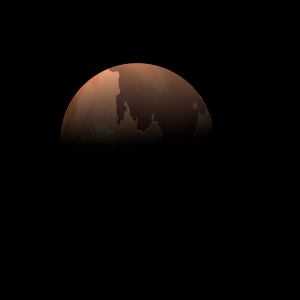|
|
Space Astro
|
Info for exoplanet "Pedopyu-ha"
| Scientific (actual) data |
|---|
| Name | K2-17 b |
| Planet status | Confirmed |
| Radius | 0.199 |
| Orbital period | 17.9675 |
| Semi major axis | 0.119 |
| Discovered | 2015 |
| Updated | 2021-02-05 |
| Tconj | 2456820 |
| Temperature (kelvin) | 487 |
| Publication | Published in a refereed paper |
| Detection type | Primary Transit |
| Radius measurement type | Primary Transit |
| Alternate names | EPIC 201855371 b, 2MASS J11531915+0624439 b, EPIC 201855371.01, WISE J115319.12+062444.2 b |
| Star name | K2-17 |
| Right ascension | 178.33° |
| Declination | 6.41° |
| Mag j | 11.076 |
| Mag h | 10.436 |
| Star distance | 125.56 |
| Star metallicity | 0.15 |
| Star mass | 0.71 |
| Star radius | 0.66 |
| Star sp type | K7 |
| Star temperature | 4320 |
| Star alternate names | EPIC 201855371, 2MASS J11531915+0624439, WISE J115319.12+062444.2 |
| Wikipedia article | K2-17 b |
Back
| |
| Fictional info (?) |
|---|
| Suggested name | Pedopyu-ha |
| Planet type | Planet |
| It is the coldest planetary atmosphere in its solar system, with a minimum temperature of 83°K (-190°C), and has a complex, layered cloud structure with 2H2O thought to make up the lowest clouds, and carbonyl sulfide the uppermost layer of clouds.
The smooth Borealis basin in the northern hemisphere covers 21 percent of the planet and may be a giant impact feature.
The two polar ice caps appear to be made largely of sand. |
| Atmosphere | Carbonyl sulfide | 67% |
| 2H2O | 17% |
| Hydrogen | 13% |
| Hydrogen deuteride (HD) | 1% |
| Formaldehyde | 0.55% |
| Xenon | 0.00074% |
| Atmospheric pressure | 70 bar |
 |
| No known satellites |
| Google search for Pedopyu-ha |
|
Website by Joachim Michaelis
|
|
|
|